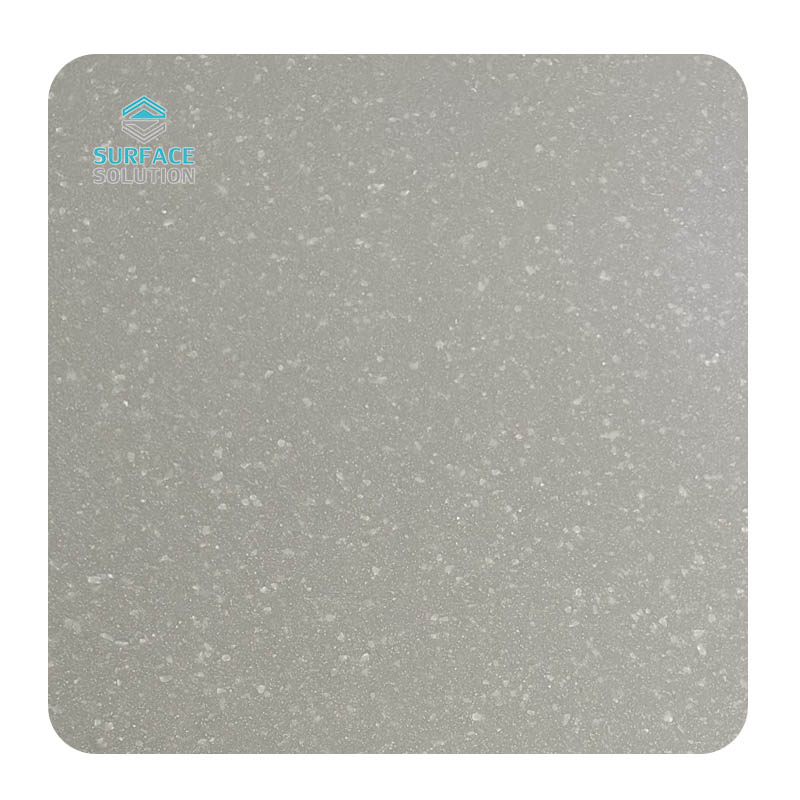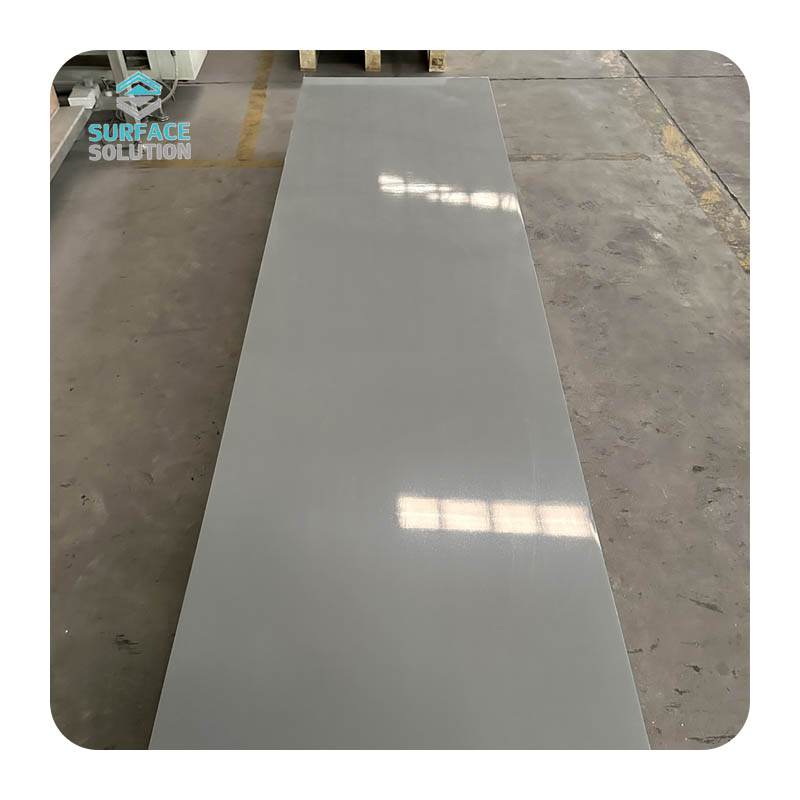
Acrylic Solid Surface: The All-in-One Solution for Seamless Countertops And Modern Interiors

In the ever-evolving world of interior design and construction, the quest for materials that seamlessly blend aesthetics, functionality, and durability has been relentless. Among the numerous options available, acrylic solid surface has emerged as a game-changer, offering an all-in-one solution for creating seamless countertops and enhancing modern interiors. This versatile material has become a favorite among designers, architects, and homeowners alike, thanks to its unique properties and endless design possibilities.
At its core, acrylic solid surface is a composite material primarily composed of acrylic polymers, natural minerals, and pigments. This combination results in a non-porous, homogeneous surface that not only looks stunning but also boasts exceptional performance characteristics. One of the most significant advantages of acrylic solid surface is its ability to be fabricated into seamless countertops. Unlike traditional materials such as granite or marble, which often require visible seams, acrylic solid surface can be joined together seamlessly, creating a smooth, continuous surface that is both visually appealing and hygienic. This seamless installation not only enhances the overall aesthetic of the space but also eliminates the risk of dirt, grime, and bacteria accumulating in the seams, making it an ideal choice for kitchens, bathrooms, and other high-traffic areas.

The design versatility of acrylic solid surface is truly remarkable. With a wide range of colors, patterns, and textures available, it can be customized to suit any design style, from sleek and modern to warm and traditional. Whether you prefer a solid, bold color to make a statement or a subtle, natural-looking pattern to blend in with your existing decor, there is an acrylic solid surface option to meet your needs. Additionally, acrylic solid surface can be thermoformed into complex shapes and curves, allowing for the creation of unique and innovative designs that are not possible with other materials. This makes it a popular choice for designers looking to add a touch of creativity and individuality to their projects.
In addition to its aesthetic appeal, acrylic solid surface is also highly durable and easy to maintain. The non-porous surface is resistant to stains, scratches, and impact, making it suitable for everyday use. It is also resistant to moisture, mold, and mildew, making it a great choice for bathrooms and other wet areas. Cleaning and maintaining acrylic solid surface is a breeze; simply wipe it down with a mild soap and water solution to keep it looking its best. In the event of minor scratches or damage, acrylic solid surface can be easily repaired by sanding and polishing, restoring it to its original condition.
The applications of acrylic solid surface extend far beyond countertops. It can be used to create a variety of interior design elements, including backsplashes, vanities, shower surrounds, and wall panels. In commercial settings, acrylic solid surface is commonly used in hospitals, laboratories, and food service establishments due to its hygienic properties and ease of maintenance. It is also a popular choice for retail displays, trade show booths, and other commercial applications, where its durability and visual appeal make it an excellent choice for showcasing products and attracting customers.
One of the key trends in modern interior design is the use of sustainable materials, and acrylic solid surface fits the bill perfectly. Many manufacturers of acrylic solid surface are committed to using environmentally friendly production methods and materials, making it a more sustainable choice compared to traditional materials such as granite and marble. Additionally, acrylic solid surface is recyclable, which means that it can be reused or repurposed at the end of its life cycle, reducing waste and minimizing its environmental impact.
Related Blogs
-
 Space-Saving Solutions with Acrylic Solid Surface DesignsIn an era of shrinking living and working spaces—from micro-apartments in urban centers to compact café kitchens—designers and homeowners are increasingly prioritizing "space efficiency" without sacrificing style or functionality. Enter acryli
Space-Saving Solutions with Acrylic Solid Surface DesignsIn an era of shrinking living and working spaces—from micro-apartments in urban centers to compact café kitchens—designers and homeowners are increasingly prioritizing "space efficiency" without sacrificing style or functionality. Enter acryli -
 How to Find the Surface Area of a Solid: A Step-by-Step GuideThe surface area (SA) of a solid is the total area of all its outer faces or surfaces. Unlike volume (which measures space inside a solid), surface area focuses on the "outside"—a key measurement for real-world tasks like wrapping a gift (
How to Find the Surface Area of a Solid: A Step-by-Step GuideThe surface area (SA) of a solid is the total area of all its outer faces or surfaces. Unlike volume (which measures space inside a solid), surface area focuses on the "outside"—a key measurement for real-world tasks like wrapping a gift ( -
 What Are Solid Surface Countertops Made Of? A Deep Dive Into Their CompositionSolid surface countertops have become a staple in modern kitchens and bathrooms, celebrated for their seamless appearance, durability, and versatility. Unlike natural stone (such as granite or marble) or laminate, they are
What Are Solid Surface Countertops Made Of? A Deep Dive Into Their CompositionSolid surface countertops have become a staple in modern kitchens and bathrooms, celebrated for their seamless appearance, durability, and versatility. Unlike natural stone (such as granite or marble) or laminate, they are -
 What Are Solid Surface Countertops? A Complete OverviewIn kitchen and bathroom design, solid surface countertops stand out as a versatile choice, balancing functionality, aesthetics, and durability. Unlike natural stone (granite, marble) or synthetic quartz, they offer unique benefits—but what exact
What Are Solid Surface Countertops? A Complete OverviewIn kitchen and bathroom design, solid surface countertops stand out as a versatile choice, balancing functionality, aesthetics, and durability. Unlike natural stone (granite, marble) or synthetic quartz, they offer unique benefits—but what exact

















